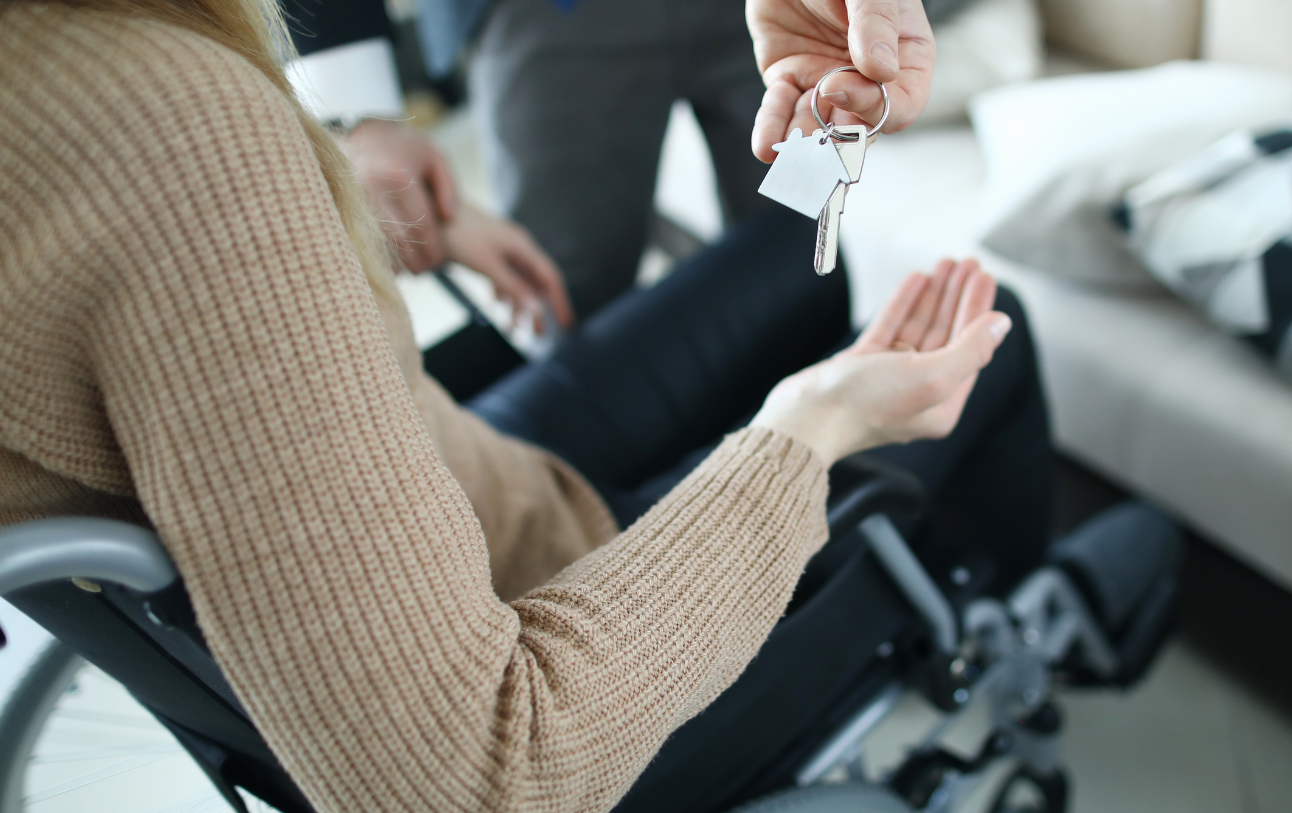Last year saw the 20th anniversary of the first disability-focused anti-discrimination law (Disability Discrimination Act 1995) (DDA) in the UK which was a major turning point for disabled people. Today, the DDA is no longer in force and has been replaced by the Equality Act 2010 which aims to make disability laws clearer and protect disabled people better.
In my former employment, I worked on a number of equality and diversity projects which made me aware of the difficulties disabled people face in education, training and employment. There is another area where people with impairments are particularly at risk – that is domestic abuse. There is a large gap in research on the issue of domestic violence and disability but from the information available we know that:
- Disabled women are twice as likely to be victims of domestic violence as non-disabled women;
- Disabled women are twice as likely to be assaulted or raped as non-disabled women
- Both men and women with a limiting illness or impairments are more likely to experience intimate partner violence.
- Disabled women are likely to have to endure abuse for longer because appropriate support is not available.
In our current release of UK Marac data (July 2015 – June 2016), 4% of high risk cases referred to Marac involved a disabled victim – far short of the SafeLives recommendation of 16% or higher, and surprising considering what the statistics tell us about the volume of disabled people suffering abuse.
There may be a number of reasons why disabled people are not being identified at Marac. One explanation could be the issue of ‘hidden impairments’. A ‘hidden impairment’ means that a person’s injury or condition is not noticeable or visible. The list of medical conditions that may be regarded as hidden impairments is extensive and can include people with epilepsy, diabetes, cancer, heart, liver or kidney problems and mental health issues. Many people, including the victims themselves, may not realise someone would be protected under the Equality Act as having an impairment (and can be recorded as such) if a condition is long term and has a considerable negative effect on their lives.
Saima Afzal MBE, an Independent Equality, Human Rights and Safeguarding Adviser states[1]:
Those with 'hidden impairments' are often discriminated against because the general public and/or practitioners can’t see the impairment and as such assumptions can be made…or there is a stigma attached to Mental Health that prevents those suffering from coming forward.
Saima Afzal MBE, an Independent Equality, Human Rights and Safeguarding Adviser
As Saima highlights, if a condition is not evident, problems or difficulties may not be identified and needs not met. One area of hidden impairments – mental health conditions – has a complex relationship with domestic violence. Professor Louise Howard from the Institute of Psychiatry notes[2]:
Domestic violence can often lead to victims developing mental health problems and people with mental health problems are more likely to experience domestic violence.
Professor Louise Howard from the Institute of Psychiatry notes
Research has shown higher rates of mental health issues with women who have experienced domestic violence compared to those who have not.[3] The SafeLives national Insights dataset shows just over a third (34%) of clients reported they have had a problem with mental health issues in the last 12 months. In the interim findings of the SafeLives Themis project nearly a quarter (23%) of non-hospital Idva clients disclosed mental health issues compared to nearly half (47%) of hospital Idva clients.
For this marginalised group, acts of domestic violence can be linked to their impairment. For example, a perpetrator of abuse can withhold or intentionally refuse to assist with care needs. As the abuser can often be the person relied upon for care there is an increased opportunity to use power and control. Dr Jackie Barron from Women’s Aid explains:[4]
We've heard cases where a woman's wheelchair was removed just as she was about to sit down, or a hearing aid thrown to the other side of the room leaving the victim unable to communicate
Dr Jackie Barron from Women's Aid
It can also be harder for disabled women to get away from an abuser as it means leaving a home that has been adapted to meet their needs, or residential care. Refuges, already coping with cuts in funding, are not always accessible or able to meet certain needs. Saima Afzal MBE[5] highlights that
Self-blaming, low self-esteem stops victims of abuse from coming forward, therefore an impairment, visible or non-visible will only further exacerbate the situation.
Saima Afzal MBE
The Research, Evaluation and Analysis team at SafeLives are keen to ensure the number of disabled victims at Marac is documented accurately, to ensure that they are being identified and supported by the Marac process. Low referrals of disabled victims could be a sign that local services are difficult to access, or there is a lack of awareness for agencies working with this group and their increased vulnerability to domestic abuse and the Marac process.
Statutory agencies and those that work in the Domestic Abuse and safeguarding arena need to capture the diverse needs of victims…if a need isn't visible we [statutory bodies and practitioners] may be unwittingly not accounting for it.
We also need to monitor disabled peoples needs more explicitly…if someone is struggling to communicate is that because of their ethnicity, language, confidence or communication barriers, or is because of an impairment? Until we unpick those barriers and identify them we won’t know the true extent of the reasons for under reporting
As Saima Afzal MBE
References
[1] Afzal, S. (Personal communication, 4th December 2015)
[2] Trevillion, K. et al. ‘Experiences of domestic violence and mental disorders: a systematic review and meta-analysis’ PLOS ONE
[3]Trevillion et al (2012). Experiences of domestic violence and mental disorders: a systematic review and meta-analysis.
[4] Ryan, F. (2012). Domestic violence and disabled women: An abuse of power.
[5] Afzal, S. (Personal communication, 4th December 2015)
[6] Afzal, S. (Personal communication, 4th December 2015)


